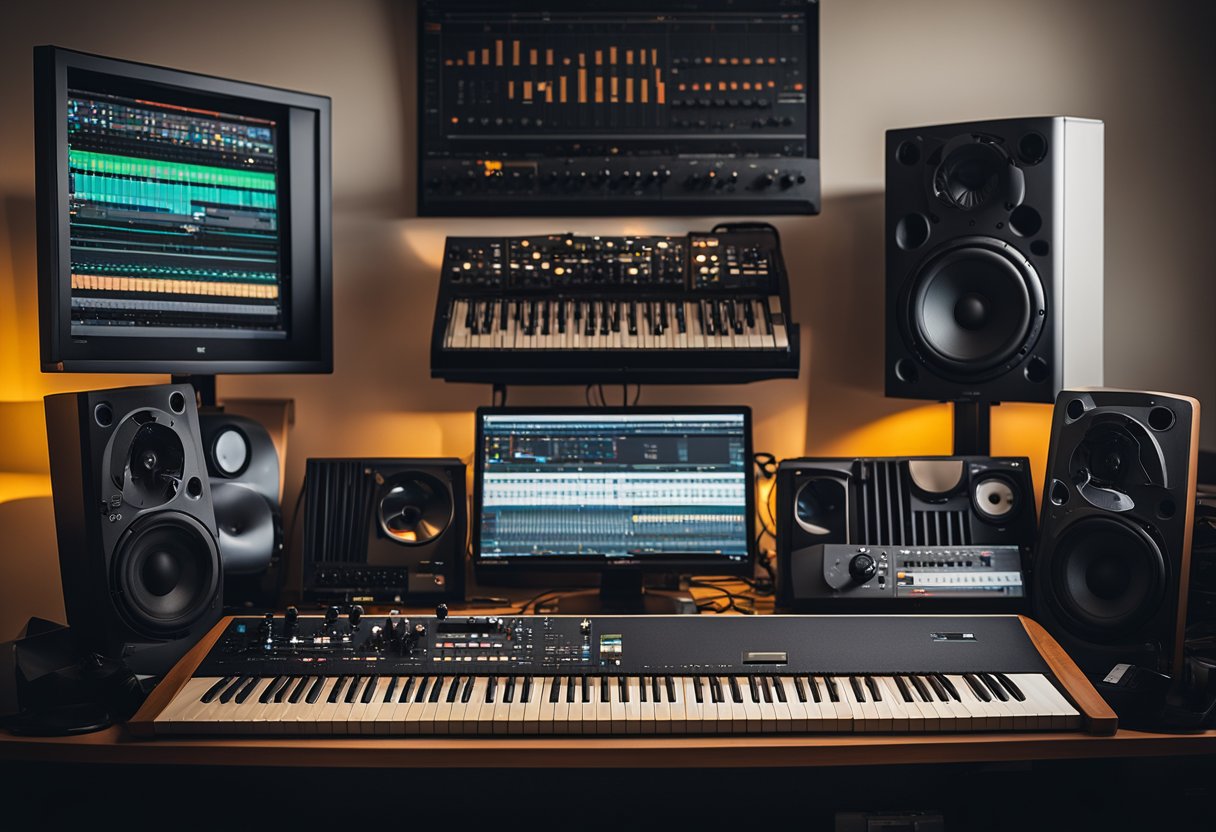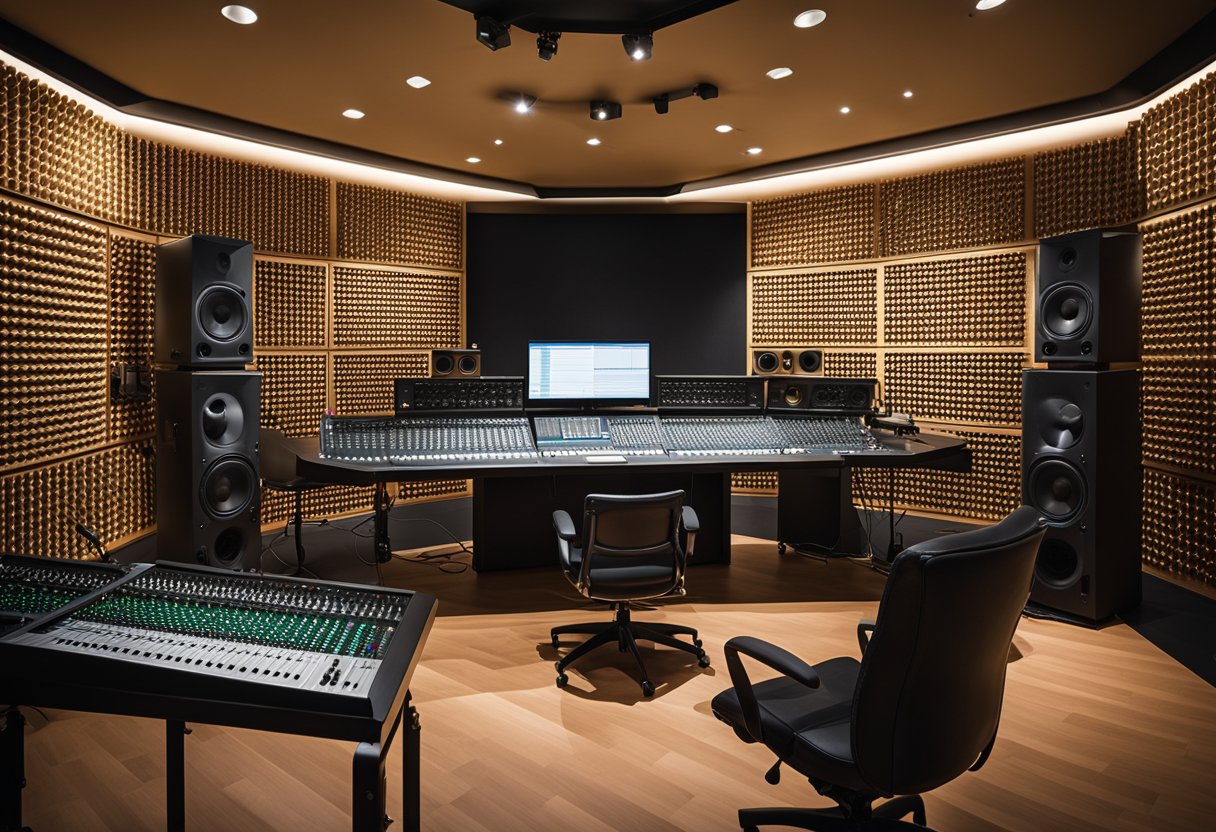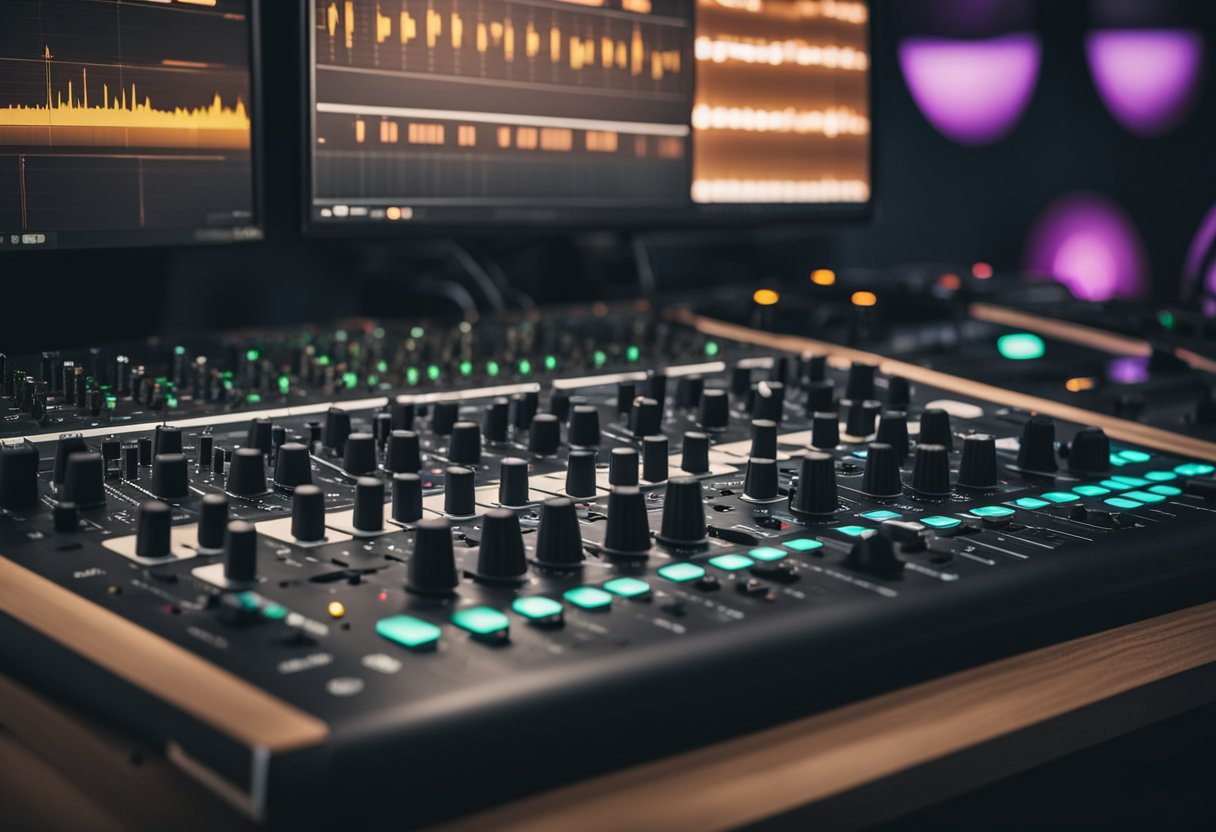Music production tutoring and coaching is a valuable resource for aspiring producers and musicians who want to enhance their skills and knowledge in the field of music production. Whether you are a beginner or an experienced producer, working with a tutor or coach can help you improve your music production skills, learn new techniques, and gain valuable insights into the industry.
Understanding music theory, setting up your studio, recording techniques, mixing fundamentals, mastering basics, music production software, creative process and workflow, live performance preparation, career guidance, continued learning and resources, and frequently asked questions are just some of the topics that can be covered in music production tutoring or coaching sessions. With the guidance of a professional tutor or coach, you can gain a deeper understanding of these topics and develop the skills and knowledge needed to succeed in the music industry.
Whether you are looking to improve your music production skills for personal or professional reasons, working with a tutor or coach can provide you with the guidance and support you need to achieve your goals. With their expertise and experience, they can help you develop a solid foundation in music production and guide you through the process of creating high-quality music.
Key Takeaways
- Music production tutoring and coaching can help aspiring producers and musicians enhance their skills and knowledge in the field of music production.
- Topics such as music theory, studio setup, recording techniques, mixing, mastering, software, and career guidance can be covered in these sessions.
- Working with a professional tutor or coach can provide valuable guidance and support to help you achieve your music production goals.
Understanding Music Theory
Music theory is an essential aspect of music production and is crucial to understanding how to create and produce music. It is the foundation upon which all music is built, and without it, creating music can be a daunting task. A music production tutor or coach can help you understand music theory and how to apply it to your music.
Harmony and Chord Progressions
Harmony is the backbone of music and refers to the combination of notes played simultaneously to create a chord. Chord progressions are a series of chords played in a specific order to create a melody. Understanding harmony and chord progressions is essential to creating music that sounds good and is pleasing to the ear.
A music production tutor or coach can help you understand the different types of chords, how to build them, and how to use them in your music. They can also help you understand chord progressions and how to create them to produce a melody that sounds good.
Rhythm and Beat Making
Rhythm and beat making are essential components of music production. They are responsible for creating the groove and feel of a track. Understanding rhythm and beat making is crucial to creating music that is enjoyable to listen to and dance to.
A music production tutor or coach can help you understand the different types of rhythms and beats, how to create them, and how to use them in your music. They can also help you understand how to layer different rhythms and beats to create a complex and interesting track.
Melody and Composition
Melody and composition are the heart and soul of music production. They are responsible for creating the memorable hooks and melodies that stick in our heads long after the music has stopped playing. Understanding melody and composition is crucial to creating music that is unique and stands out from the crowd.
A music production tutor or coach can help you understand the different types of melodies and how to create them. They can also help you understand composition and how to use it to create a track that is memorable and unique.
Setting Up Your Studio
When it comes to music production, having a well-equipped studio is essential. Here are some key factors to consider when setting up your own music production studio.
Equipment Essentials
The first step in setting up a music production studio is ensuring that you have all the necessary equipment. This includes a computer, digital audio workstation (DAW), audio interface, studio monitors, headphones, and microphones. It’s important to invest in high-quality equipment to ensure the best possible sound quality.
Acoustic Treatment
Acoustic treatment is another important aspect of setting up a music production studio. This involves using materials such as acoustic foam panels, bass traps, and diffusers to control the sound reflections in the room. Proper acoustic treatment can make a significant difference in the quality of your recordings and mixes.
Software Selection
Choosing the right software is crucial for any music producer. There are many options available, each with its own set of features and capabilities. It’s important to choose software that is compatible with your hardware and suits your specific needs and preferences.
Overall, setting up a music production studio requires careful planning and attention to detail. By investing in high-quality equipment, implementing proper acoustic treatment, and selecting the right software, you can create a professional-grade studio that will help you achieve your musical goals.
Recording Techniques

Microphone Usage
When it comes to recording music, microphone usage is critical. A good microphone can make a huge difference in the quality of the recording. A music production tutor/coach can help you choose the right microphone for your needs and teach you how to use it effectively.
There are many different types of microphones available, each with its unique characteristics and uses. Some microphones are better suited for recording vocals, while others are better for recording instruments. A tutor/coach can help you understand the differences between these types of microphones and how to use them to achieve the desired sound.
MIDI Sequencing
MIDI sequencing is another essential recording technique that a music production tutor/coach can teach you. MIDI stands for Musical Instrument Digital Interface, and it is a protocol used to connect electronic musical instruments, computers, and other devices. MIDI sequencing allows you to record, edit, and play back musical performances using digital instruments.
A tutor/coach can teach you how to use MIDI sequencing software, such as Ableton Live or Logic Pro, to create complex musical arrangements. They can also help you understand the basics of MIDI programming, such as note values, velocity, and timing.
Audio Editing
Audio editing is the process of manipulating and arranging recorded sound files. A music production tutor/coach can teach you how to use audio editing software, such as Pro Tools or Adobe Audition, to edit and mix your recordings.
Some of the techniques that a tutor/coach can teach you include equalization, compression, and reverb. They can also help you understand the basics of audio mixing, such as panning, levels, and stereo imaging.
In conclusion, recording techniques are critical to producing high-quality music. A music production tutor/coach can help you master these techniques and take your music production skills to the next level.
Mixing Fundamentals
Balancing Levels
Balancing levels is an essential step in mixing a track. It involves adjusting the levels of each instrument or element in a mix to create a cohesive and balanced sound. The goal is to ensure that no single element is too loud or too soft, and that each element can be heard clearly without overpowering the others.
One approach to balancing levels is to start with the drums and bass, as they provide the foundation of the mix. From there, the mixer can gradually add other elements, such as guitars, keyboards, and vocals, while continuously adjusting the levels to maintain balance.
Equalization
Equalization, or EQ, is the process of adjusting the frequency balance of a mix to improve clarity, separation, and tonal balance. EQ can be used to boost or cut specific frequencies, such as boosting the low end of a bass guitar or cutting the harshness of a vocal.
One common approach to EQ is to use a frequency chart to identify the frequency ranges of each instrument or element in a mix. From there, the mixer can use EQ to adjust the frequency balance of each element, ensuring that they all fit together in the mix.
Dynamics Processing
Dynamics processing refers to the use of compressors, limiters, and other tools to control the dynamic range of a mix. This can help to ensure that no element is too loud or too soft, and that the overall volume of the mix remains consistent.
One common approach to dynamics processing is to start with the drums and bass, using compression to control the dynamic range of these elements. From there, the mixer can gradually add other elements, such as guitars and vocals, while continuing to use compression and other dynamics tools to maintain balance and consistency.
Mastering Basics

Mastering is the final step in the music production process that involves preparing the mix for distribution. It involves enhancing the overall sound quality of the mix by adjusting various parameters such as loudness, stereo width, and frequency balance. A music production tutor/coach can help aspiring music producers to master their tracks effectively.
Enhancing Loudness
Loudness is an essential aspect of any music track as it affects the overall impact of the mix. A music production tutor/coach can teach the basics of loudness and help the producer to use various tools such as compressors, limiters, and EQs to enhance the loudness of the mix. It is important to note that excessive loudness can lead to distortion and compromise the sound quality of the mix.
Stereo Widening
Stereo widening is the process of creating a wider stereo image by manipulating the stereo field of the mix. A music production tutor/coach can teach various techniques such as panning, stereo imaging plugins, and mid-side processing to achieve an optimal stereo width. It is important to note that excessive stereo widening can lead to phase cancellation and compromise the mono compatibility of the mix.
Finalizing the Mix
Finalizing the mix involves making the necessary adjustments to the mix to ensure that it is ready for distribution. A music production tutor/coach can teach various techniques such as EQing, compression, and limiting to achieve an optimal frequency balance and loudness level. It is important to note that finalizing the mix should be done in a neutral listening environment and with reference tracks to ensure that the mix is competitive in the market.
In conclusion, mastering is an essential aspect of music production that requires knowledge, experience, and attention to detail. A music production tutor/coach can help aspiring music producers to master their tracks effectively and achieve professional-sounding mixes.
Music Production Software

Music production software is an essential tool for any aspiring music producer. It allows them to create, record, mix, and master their music in a digital environment. There are many different types of music production software available on the market today, each with its own unique features and capabilities.
Digital Audio Workstations
Digital Audio Workstations (DAWs) are the backbone of any music production setup. They provide a complete environment for recording, editing, and mixing audio and MIDI tracks. Some of the most popular DAWs include Ableton Live, Logic Pro X, and Pro Tools.
Ableton Live is a popular choice for electronic music producers due to its intuitive interface and powerful MIDI capabilities. Logic Pro X is a go-to DAW for many Mac users, offering a wide range of virtual instruments and effects. Pro Tools is a professional-grade DAW used in many recording studios around the world.
Virtual Instruments
Virtual instruments are software-based emulations of traditional instruments. They allow producers to create realistic sounding instrument parts without the need for physical instruments. Some popular virtual instruments include Native Instruments’ Kontakt, Spectrasonics’ Omnisphere, and Arturia’s V Collection.
Kontakt is a versatile sampler that includes a vast library of sounds and instruments. Omnisphere is a powerful synthesizer that can create a wide range of sounds, from traditional to experimental. Arturia’s V Collection includes emulations of classic synthesizers, such as the Minimoog and the ARP 2600.
Plugins and Effects
Plugins and effects are software-based tools that can be used to shape and manipulate audio. They can be used to add reverb, delay, compression, distortion, and more. Some popular plugins and effects include Waves’ SSL E-Channel, FabFilter’s Pro-Q 3, and Soundtoys’ Decapitator.
Waves’ SSL E-Channel is a popular choice for mixing engineers due to its ability to emulate the sound of classic SSL consoles. FabFilter’s Pro-Q 3 is a versatile EQ that offers precise control over frequency and gain. Soundtoys’ Decapitator is a distortion plugin that can add warmth and character to any sound.
In conclusion, music production software is an essential tool for any music producer. There are many different types of software available, each with its own unique features and capabilities. By choosing the right software for their needs, producers can unlock their creative potential and bring their musical ideas to life.



